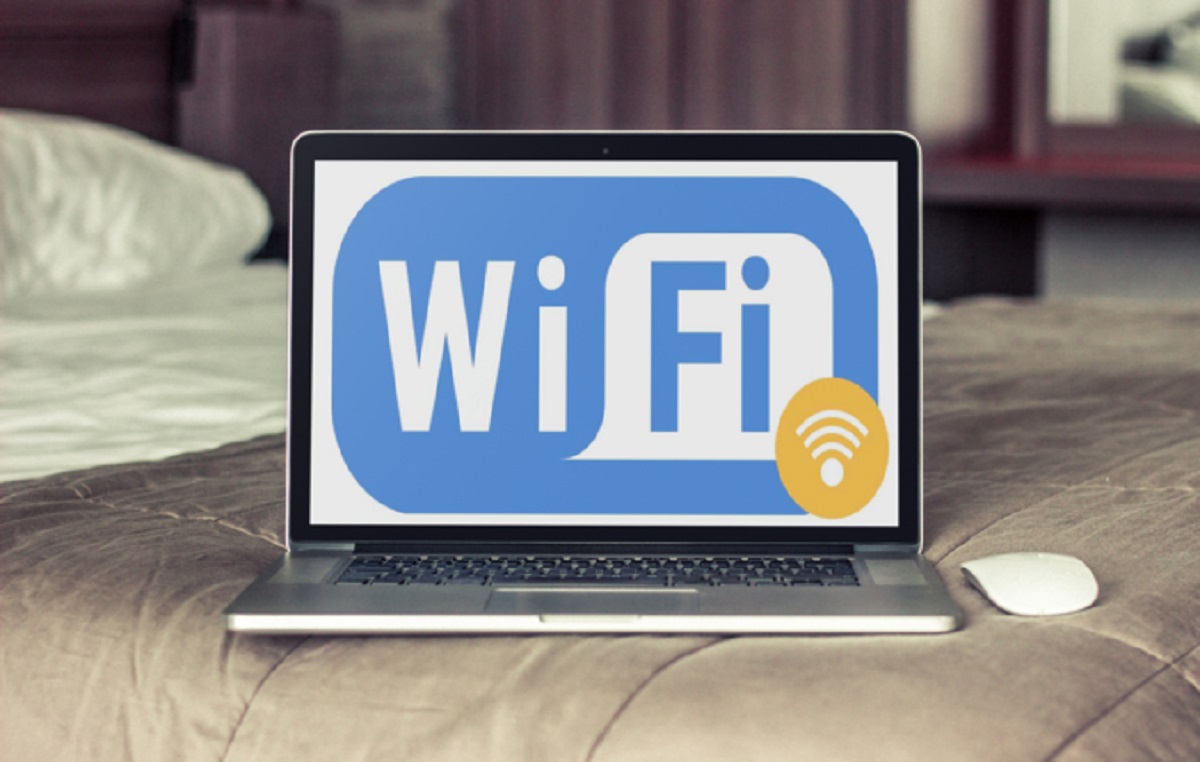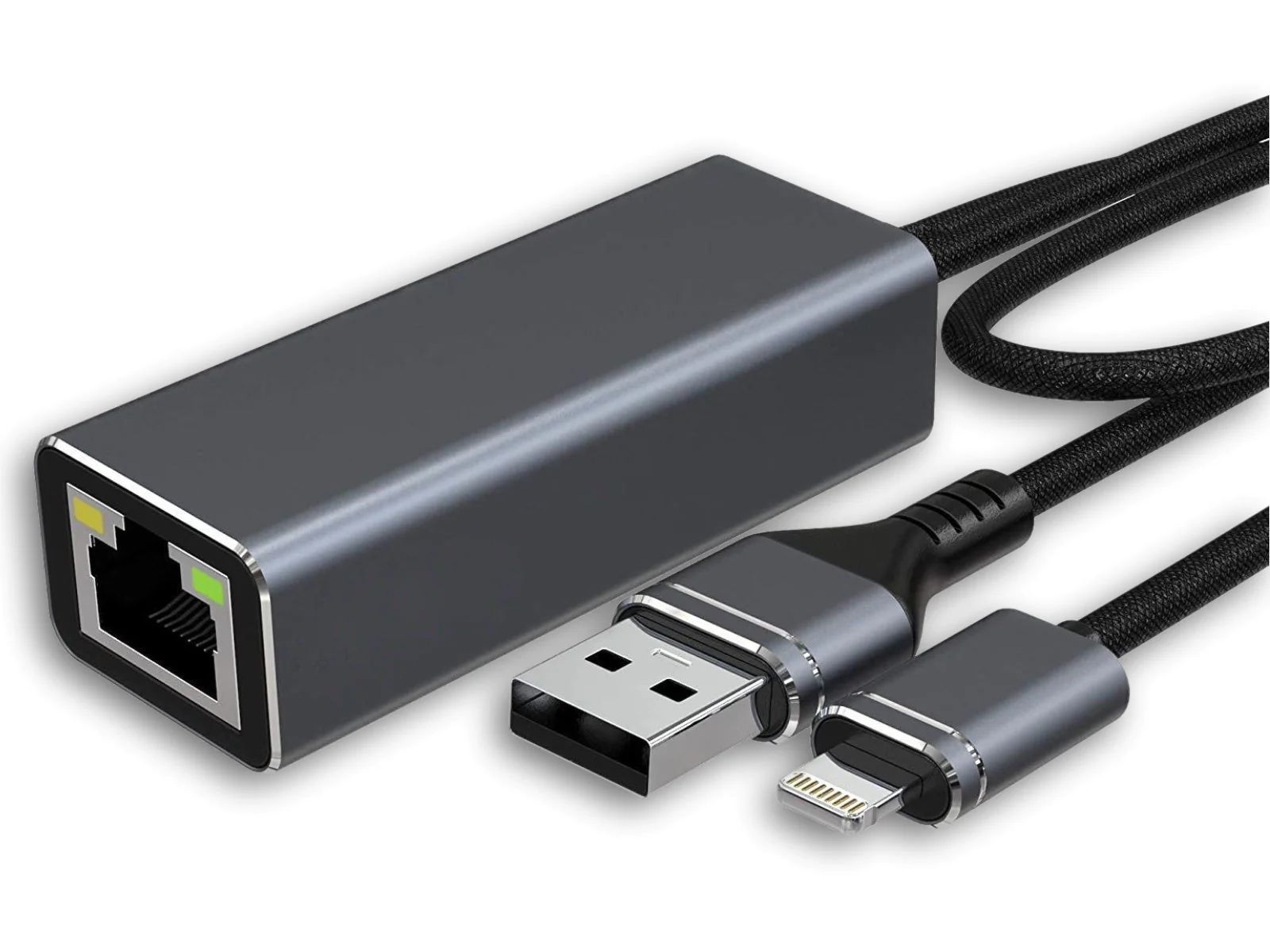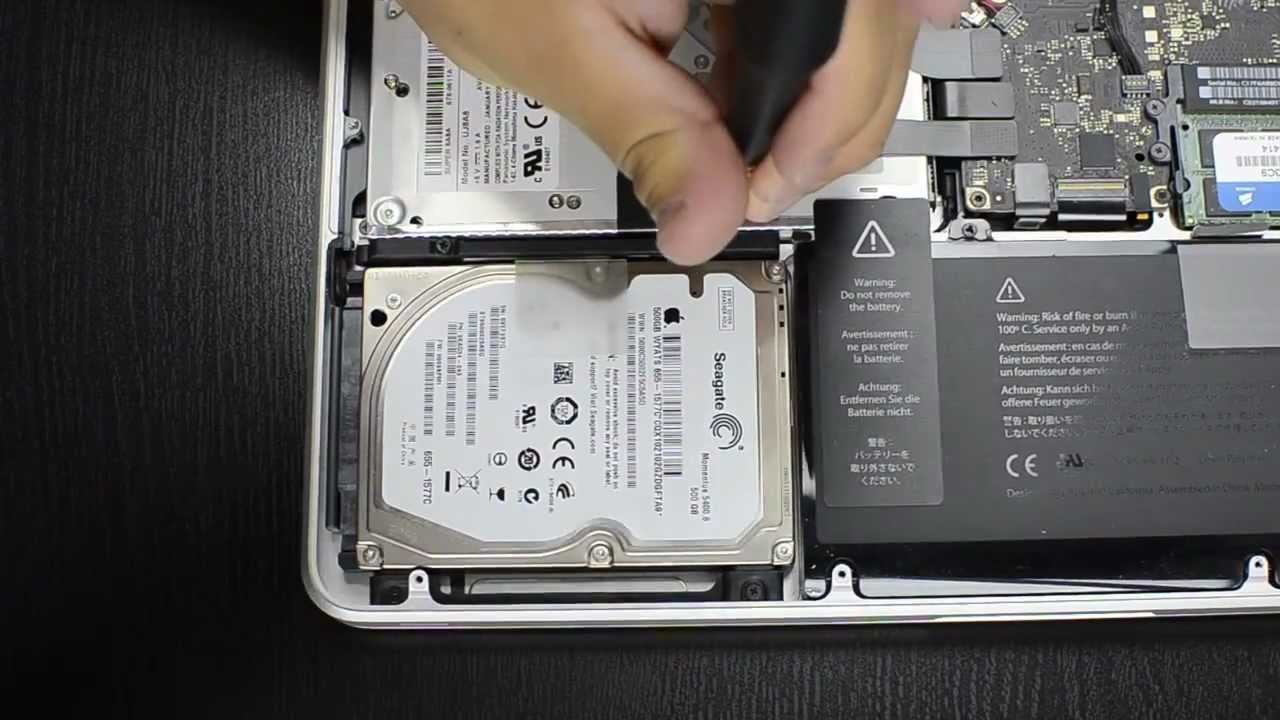Possible Reasons for Your MacBook Disconnecting from WiFi
Experiencing frequent WiFi disconnections on your MacBook can be frustrating, especially when you rely on a stable internet connection for work or entertainment. There are several possible reasons behind this issue, and understanding them can help you troubleshoot and resolve the problem. Here are some of the common culprits:
- Weak WiFi Signal: Distance from the WiFi router, physical barriers, or interference from other electronic devices can weaken your MacBook’s WiFi signal, resulting in intermittent disconnections. Ensure that your MacBook is within range of the router and try adjusting its position for a stronger signal.
- Network Congestion: If multiple devices are connected to the same network and consuming a large amount of bandwidth, it can lead to congestion and cause your MacBook to disconnect. To resolve this, try connecting fewer devices simultaneously or consider upgrading your internet plan for faster speeds.
- Outdated WiFi Drivers: In some cases, outdated or incompatible WiFi drivers on your MacBook can lead to connection issues. Ensure that you have the latest drivers installed by checking for updates through the macOS Software Update feature.
- Network Configuration Issues: Incorrect network settings on your MacBook can interfere with the WiFi connection and cause frequent disconnections. Check the network preferences on your MacBook and ensure that the correct network is selected.
- Router or Modem Issues: Sometimes, the problem lies with your WiFi router or modem rather than your MacBook. Restarting these devices can help resolve temporary glitches and improve the overall connection stability.
- Interference from Other Devices: Other electronic devices in close proximity to your MacBook, such as cordless phones, baby monitors, or microwave ovens, can interfere with the WiFi signal and lead to disconnections. Keep your MacBook away from such devices or consider relocating them to reduce interference.
- Internet Service Provider (ISP) Problems: Occasionally, the issue might originate from your ISP. Contact your ISP to ensure that there are no service outages or connectivity problems in your area.
- Hardware Malfunction: In rare cases, a malfunctioning WiFi card or other hardware component on your MacBook might be causing the disconnections. If all other troubleshooting steps fail, consider contacting Apple Support for further assistance.
By identifying the potential reasons behind your MacBook’s WiFi disconnections, you can take the necessary steps to troubleshoot and resolve the issue. The specific solution may vary depending on the cause, so it’s important to assess each possibility systematically. In the next section, we will explore some methods for checking and troubleshooting your MacBook’s WiFi connection.
How to Check Your WiFi Connection
Before diving into troubleshooting your MacBook’s WiFi connection, it’s essential to have a clear understanding of its current status. Here are some steps to help you check the status of your WiFi connection:
- Check WiFi Icon: Look at the WiFi icon at the top-right corner of your MacBook’s screen. If the icon shows bars indicating signal strength, it means your MacBook is connected to WiFi. If it displays an “X” or is grayed out, it indicates a disconnected or disabled WiFi connection.
- Open Network Preferences: To access detailed information about your WiFi connection, go to the Apple menu and select “System Preferences.” Then, click on “Network.” This will open the Network Preferences window.
- Select WiFi: In the Network Preferences window, make sure that “Wi-Fi” is selected in the left sidebar. The information displayed on the right will provide details about your WiFi connection, including its status, IP address, and signal strength.
- Check Signal Strength: Look for the signal strength indicators next to the “WiFi” icon in Network Preferences. The more filled bars there are, the stronger your WiFi signal.
- Check IP Address: In the Network Preferences window, under the “Status” section, look for the “IPv4 Address” field. A valid IP address indicates that your MacBook is successfully connected to the WiFi network.
By following these steps, you can quickly determine whether your MacBook is connected to WiFi and gather vital information about the connection’s strength and status. If your MacBook is not connected to WiFi or there are issues with the connection, further troubleshooting may be required to pinpoint and resolve the problem, which we will explore in the next section.
How to Troubleshoot Your MacBook’s WiFi Connection
If you’re experiencing frequent disconnections or other issues with your MacBook’s WiFi connection, there are several troubleshooting steps you can take to resolve the problem. Here’s what you can try:
- Restart Your MacBook: Sometimes, a simple restart can fix temporary glitches and restore your MacBook’s WiFi connection. Go to the Apple menu and choose “Restart” to reboot your MacBook.
- Reset PRAM/NVRAM: Resetting the PRAM (Parameter Random Access Memory) or NVRAM (Non-Volatile Random Access Memory) on your MacBook can help resolve WiFi-related issues. Restart your MacBook and hold down the Command + Option + P + R keys simultaneously until you hear the startup sound twice.
- Delete WiFi Network Preferences: Deleting existing WiFi network preferences can refresh the connection settings and potentially resolve any conflicts. In Network Preferences, select “Wi-Fi” from the left sidebar and click on the “-” button at the bottom to remove the network. Then, reconnect to the WiFi network and re-enter the password if prompted.
- Reset SMC: Resetting the System Management Controller (SMC) on your MacBook can help fix WiFi-related issues, especially if you’re experiencing connectivity problems. The process varies depending on your MacBook model, so refer to Apple’s support website for the specific steps.
- Create a New Network Location: Sometimes, network configuration issues can cause WiFi connection problems. Creating a new network location can help reset the settings. In Network Preferences, click on the “Location” dropdown menu and select “Edit Locations.” Click the “+” button to create a new location, name it, and set it as the active location.
- Update macOS: Keeping your MacBook’s operating system up to date is crucial for maintaining optimal WiFi performance. Check for software updates by going to the Apple menu, selecting “System Preferences,” and clicking on “Software Update.” Install any available updates for your macOS.
- Check Firewall Settings: The macOS firewall can sometimes interfere with WiFi connections. Go to System Preferences, select “Security & Privacy,” and click on the “Firewall” tab. Ensure that the Firewall is turned off, or if it’s enabled, add an exception for your WiFi network.
- Disable VPN or Proxy: If you’re using a VPN (Virtual Private Network) or proxy server, try disabling them temporarily as they can sometimes impact WiFi connectivity. Check your network settings and disable any VPN or proxy configurations.
- Connect to a Different WiFi Network: If possible, try connecting your MacBook to a different WiFi network to determine whether the issue is specific to your current network or your MacBook itself.
- Contact Apple Support: If none of the above steps resolve the WiFi issue on your MacBook, it’s recommended to seek assistance from Apple Support or visit an Apple Authorized Service Provider for further diagnosis and repair.
By following these troubleshooting steps, you can identify and resolve common WiFi issues on your MacBook. Remember to test your WiFi connection after each step to determine whether the problem has been resolved before proceeding to the next step. In the next sections, we will explore additional tips and tricks to improve your MacBook’s WiFi connection.
Adjusting Your Network Settings on Your MacBook
Adjusting the network settings on your MacBook can help optimize your WiFi connection and improve its stability. Here are some settings you can tweak:
- Configure WiFi Priority: If your MacBook is connected to multiple WiFi networks, you can prioritize the networks to ensure a seamless connection. Go to Network Preferences, select “Wi-Fi” from the left sidebar, click on “Advanced,” and drag your preferred network to the top of the list.
- Disable Automatic Network Switching: Sometimes, your MacBook may automatically switch to a stronger WiFi network, leading to intermittent disconnections. To prevent this, uncheck the “Ask to join new networks” and “Disconnect from Wi-Fi while asleep” options in Network Preferences > Wi-Fi > Advanced.
- Change DNS Settings: Switching to a faster DNS (Domain Name System) server can improve the speed and reliability of your WiFi connection. In Network Preferences, select your WiFi network, click on “Advanced,” and go to the “DNS” tab. Remove any existing DNS servers and add new ones, such as Google DNS (8.8.8.8 and 8.8.4.4) or OpenDNS (208.67.222.222 and 208.67.220.220).
- Disable Bluetooth: Bluetooth devices can sometimes interfere with WiFi signals. Temporarily disabling Bluetooth on your MacBook can help troubleshoot WiFi connectivity problems. Go to System Preferences > Bluetooth and turn off Bluetooth.
- Manage Network Locations: If you frequently switch between different networks, creating and managing network locations can streamline the process. In Network Preferences, go to the “Location” dropdown menu and select “Edit Locations.” Click on the “+” button to create a new location and name it accordingly.
- Disable WiFi Wakeup: WiFi Wakeup allows your MacBook to automatically connect to known networks when it wakes up from sleep. However, this feature can sometimes cause connectivity issues. To disable WiFi Wakeup, go to System Preferences > Energy Saver and uncheck the “Wake for network access” option.
- Reset Network Settings: If you’ve made several changes to your network settings and are still experiencing WiFi problems, resetting the network settings can help restore the default configurations. In Network Preferences, click on the “Advanced” button, and then select the “Reset” or “Renew DHCP Lease” option.
By adjusting these network settings on your MacBook, you can customize and optimize your WiFi connection to better suit your needs. Remember to test your connection after making any changes to ensure that the adjustments have resulted in the desired improvements. In the next section, we will look at restarting your WiFi router and modem as a potential solution to WiFi disconnection issues.
Restarting Your WiFi Router and Modem
When facing WiFi disconnection issues on your MacBook, one of the simplest yet effective troubleshooting steps is to restart your WiFi router and modem. Restarting these devices can help resolve temporary glitches and refresh the connection. Here’s how to do it:
- Locate Your WiFi Router and Modem: Identify the physical location of your WiFi router and modem. These devices are usually found near each other and connected with cables.
- Power Off Your Router and Modem: Locate the power cables connected to your router and modem. Carefully unplug both devices from their power sources. It’s recommended to wait for about 10-15 seconds before proceeding to the next step.
- Power On Your Router and Modem: Plug the power cables back into your router and modem. Ensure they are securely connected and wait for the devices to power on completely. This process may take a few minutes, so be patient.
- Check WiFi Connectivity: Once your router and modem have restarted, check if your MacBook is able to connect to the WiFi network. Go to the WiFi icon in the top-right corner of your MacBook’s screen and verify that it shows a connected signal.
- Test Your WiFi Connection: After restarting your router and modem, test your WiFi connection by browsing the internet or performing other online activities. Verify if the WiFi disconnection issue has been resolved. If not, proceed to other troubleshooting steps.
Restarting your WiFi router and modem is a simple yet effective method to troubleshoot WiFi connection problems. It can help resolve minor issues and establish a fresh connection between your MacBook and the network. If you continue experiencing WiFi disconnections, proceed to the next section, where we will explore the importance of updating the software on your MacBook.
Updating the Software on Your MacBook
Keeping the software on your MacBook up to date is crucial for maintaining optimal performance, including your WiFi connection. Outdated software can sometimes cause compatibility issues and lead to WiFi disconnections. Here’s how to ensure your MacBook’s software is up to date:
- Check for Software Updates: Go to the Apple menu and select “System Preferences.” Then, click on “Software Update.” Your MacBook will check for available updates, and if any are found, you will see them listed. Click on “Update Now” to start the update process.
- Install Available Updates: If there are software updates available for your MacBook, click on “Update Now” to begin the installation. Make sure you have a stable internet connection during the update process.
- Restart Your MacBook: After installing software updates, it’s recommended to restart your MacBook. This allows the updates to take effect and ensures a smooth transition.
- Enable Automatic Updates: To ensure that your MacBook’s software remains up to date, enable the automatic update feature. Go to the Apple menu, select “System Preferences,” and click on “Software Update.” Check the box next to “Automatically keep my Mac up to date.”
- Check Third-Party Software Updates: In addition to macOS updates, it’s important to keep your third-party software applications updated as well. Visit the websites of the respective software providers to check for updates and follow their instructions for installation.
Regularly updating the software on your MacBook is essential for maintaining hardware compatibility, improving performance, and addressing any known issues, including WiFi connectivity problems. By keeping your MacBook up to date, you can ensure that you have the latest bug fixes and security enhancements that can help resolve WiFi disconnection issues. In the next section, we will explore the option of resetting the network settings on your MacBook.
Reset the Network Settings on Your MacBook
If you’re still experiencing WiFi disconnection issues on your MacBook, resetting the network settings can help resolve any underlying configuration problems. Here’s how to reset the network settings on your MacBook:
- Open Network Preferences: Go to the Apple menu and select “System Preferences.” Then, click on “Network.”
- Unlock the Network Preferences: At the bottom left corner of the Network Preferences window, click on the lock icon and enter your administrator password to unlock the settings.
- Select Your WiFi Network: In the left sidebar, select “Wi-Fi.” Then, click on the “Advanced” button at the bottom right corner of the window.
- Reset DNS and DHCP Settings: In the Advanced settings, go to the “TCP/IP” tab and click on the “Renew DHCP Lease” button. This will refresh your IP address and other network settings.
- Reset WiFi Configuration: Switch to the “Wi-Fi” tab in the Advanced settings and click on the “Remove” (-) button to delete all saved WiFi networks. This will erase any conflicting or outdated WiFi configurations.
- Reset Other Network Configurations: If you have other network interfaces listed in the left sidebar of the Network Preferences window, such as Ethernet or Bluetooth, repeat the steps above for those interfaces as well.
- Apply the Changes: Once you have reset the network settings, click on the “Apply” button to save the changes.
- Restart Your MacBook: After resetting the network settings, restart your MacBook to ensure that the changes take effect.
- Reconnect to WiFi: After your MacBook restarts, go back to the Network Preferences window and select “Wi-Fi” from the left sidebar. Click on the “+” button to add your WiFi network and enter the necessary information, such as the network name and password.
By resetting the network settings on your MacBook, you can clear any misconfigurations that may be causing the WiFi disconnection issues. This process essentially restores the network settings to their default state, allowing you to start fresh. If the issue persists after resetting the network settings, continue to the next section for tips on dealing with interference from other devices.
Dealing with Interference from Other Devices
Interference from other electronic devices can disrupt your MacBook’s WiFi signal and lead to frequent disconnections. Identifying and mitigating this interference can help improve the stability of your WiFi connection. Here are some steps to deal with interference:
- Identify Potential Interference: Look for sources of interference near your MacBook and WiFi router. Common culprits include cordless phones, baby monitors, microwave ovens, and Bluetooth devices.
- Keep Distance and Relocate Devices: If possible, keep your MacBook and WiFi router away from sources of interference. Relocate devices like cordless phones or microwave ovens to a different area to reduce the impact on the WiFi signal.
- Change WiFi Channel: WiFi routers operate on different channels, and changing the channel can help minimize interference. Access your router’s settings page through your web browser and explore the channel options. Experiment with different channels to find the one that provides the least interference.
- Upgrade to 5GHz: If your WiFi router supports it, consider switching to the 5GHz frequency band instead of 2.4GHz. The 5GHz band is less crowded and often offers faster and more stable connections with reduced interference.
- Use Wired Connections: If your MacBook is stationary and near the WiFi router, consider using a wired Ethernet connection for a more stable and interference-free connection.
- Optimize WiFi Router Placement: Position your WiFi router in a central location, away from walls and obstructions. Elevating the router and keeping it away from other electronic devices can also help improve WiFi signal strength and reduce interference.
- Set WiFi Router to Higher Power: Some WiFi routers allow you to adjust the transmit power. Increase the power level to extend the WiFi signal’s range and minimize potential interference.
- Use WiFi Analyzer Apps: WiFi analyzer apps can help identify nearby WiFi networks and their overlapping channels. Use these apps to choose the least congested channel for your WiFi router.
- Upgrade Your WiFi Equipment: In cases of severe and persistent interference, upgrading your WiFi router or purchasing a WiFi range extender can provide better signal coverage and reduce the impact of interference.
By following these steps, you can minimize interference from other devices and improve the strength and stability of your MacBook’s WiFi connection. Experiment with different solutions and combinations to find the best approach for your specific situation. If the WiFi disconnection issues continue, it may be necessary to contact your internet service provider for further assistance, as we will discuss in the next section.
Contacting Your Internet Service Provider
If you have exhausted all troubleshooting options and are still experiencing WiFi disconnection issues on your MacBook, it may be time to reach out to your internet service provider (ISP) for assistance. Here are some steps to take when contacting your ISP:
- Gather Information: Before contacting your ISP, gather relevant information, such as your account details, the nature of the WiFi disconnection issues, and any troubleshooting steps you’ve already taken. This will help streamline the support process.
- Check for Service Outages: Visit your ISP’s website, check their social media accounts, or call their customer support to verify if there are any reported service outages or network maintenance in your area. Sometimes, WiFi connectivity problems can be due to issues on the ISP’s end.
- Explain the Issue: When contacting your ISP’s customer support, clearly explain the WiFi disconnection issues you are experiencing. Provide details about the symptoms, when they started, and any specific error messages or patterns you have noticed.
- Follow Their Guidance: The customer support representative may provide specific troubleshooting steps for you to follow. Cooperate with them, and provide any requested information or perform any necessary tests on your MacBook as instructed.
- Request a Technician Visit: If the issue persists or if the ISP identifies a problem from their end, you may need to schedule a technician visit. Make sure to agree upon a suitable date and time for the visit.
- Document Communication and Solutions: Keep a record of all communication with your ISP, including the date, time, and details of conversations, as well as any solutions or action plans discussed. This can be useful for future reference or if further assistance is required.
Contacting your ISP allows you to leverage their expertise and resources to resolve WiFi disconnection issues. Their technical support team can guide you through additional troubleshooting steps, identify any network-related problems, and coordinate further actions if necessary. Remember to remain patient throughout the process, as troubleshooting complex network issues may take time.
If the WiFi disconnection issues persist even after contacting your ISP, it may be worth considering seeking professional help. In the next section, we will discuss the option of seeking assistance from professional computer technicians or network specialists.
Seeking Professional Help
If you have exhausted all other troubleshooting options and are still struggling with WiFi disconnection issues on your MacBook, it may be necessary to seek assistance from professional computer technicians or network specialists. Here are some steps to consider when seeking professional help:
- Research Reputable Professionals: Look for certified computer technicians or network specialists who have experience in diagnosing and resolving WiFi connection problems. Read reviews, ask for recommendations, or check with local IT service providers to find reputable professionals.
- Prepare Relevant Information: Before reaching out to a professional, gather all relevant information about the WiFi disconnection issues you’re experiencing. Include details about your MacBook model, the history and symptoms of the problem, any troubleshooting steps you’ve taken, and any error messages encountered.
- Request Initial Consultation: Contact the professional or service provider and explain your WiFi connection issues. Request an initial consultation to discuss the problem and determine if they have the expertise to assist you. Some professionals may offer remote diagnostic services as well.
- Describe Previous Troubleshooting: During the consultation, provide a detailed account of the troubleshooting steps you’ve already undertaken. This will help the professional assess the situation and avoid repeating unnecessary steps.
- Ask for Clear Communication: Request that the professional explains the diagnosis and recommended solutions in a clear and understandable manner. Seek clarification on any technical terms or concepts that are unfamiliar to you to ensure you fully comprehend the proposed plan of action.
- Discuss Fees and Policies: Inquire about the professional’s fees, billing practices, warranty or guarantee policies, and any additional costs that may be involved. This will help you understand the financial implications of seeking professional help.
- Follow Recommendations: If you decide to proceed with professional assistance, carefully follow the recommendations and instructions provided. This may include bringing your MacBook to the professional’s location or granting remote access to your device for further diagnostics and repairs.
- Maintain Documentation: Keep copies of all invoices, receipts, and any written communication exchanged with the professional. Document all changes made to your MacBook’s configuration or hardware to ensure transparency and aid in future troubleshooting if required.
Seeking professional help can be a valuable option when other methods have failed to resolve your MacBook’s WiFi disconnection issues. Professionals have the skills, knowledge, and resources to diagnose complex problems and provide tailored solutions. However, it’s important to consider the associated costs and ensure you are working with reputable individuals or service providers for the best possible outcome.
With the assistance of professionals, you can gain insights and solutions that go beyond your own troubleshooting abilities, ultimately helping you restore a stable and reliable WiFi connection on your MacBook.

























